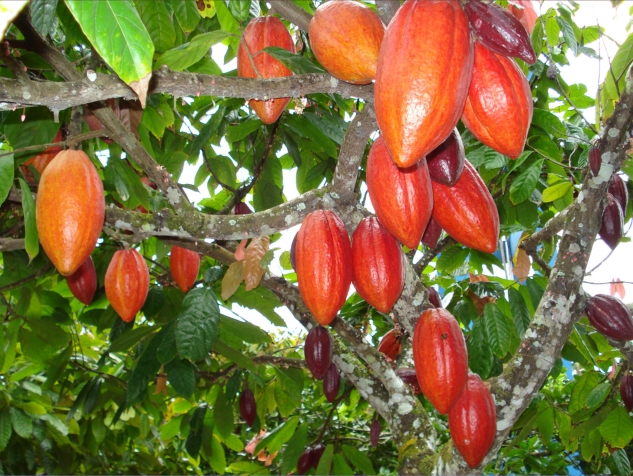
Cocoa Cultivation at Cantagalo Farms
Agrícola Cantagalo´s production of cocoa reached its highest levels in 1994/1995, that is, 1930 tons (equivalent to 128,681 arrobas). It is important to emphasize that Cantagalo won more than once "Cocoa Producer of the Year" prize, bestowed by CEPLAC (Executive Commission of the Plan for Cocoa Farming). Throughout the 80's until the mid-90´s, three farms (Cantagalo, Angola and Altamira) almost always exceeded an average productivity of 100 arrobas per hectare.
Current Goals
3The estimated cocoa production of the current harvest is approximately 1,350 tons (90,000 arrobas meaning that we are reaching the average productivity of 63 arrobas per hectare, results obtained by a well trained and extremely motivated team. In the coming five years we shall reach the productivity of 80 arrobas per hectare, thus taking our production to approximately 2,145 tons (143,000 'arrobas'). Our goal is to reach, within seven years, a productivity of 100 'arrobas' per hectare, with a total production of about 2,670 tons, equivalent to 178,000 arrobas.
Technological advances: Overcoming adversities
In the mid-90´s, a fungus known as Witch's broom, whose scientific designation is "crinipellis perniciosa" made its debut in the state of Bahia and found there the ideal climatic conditions for its expansion, which caused a brutal decline in production of cocoa in the state.
Our production also entered a period of vertiginous fall, with its worst moment in the 2000/2001 harvest when we produced just 19,171 arrobas, a little more than 14% of our production in previous harvests.
We did not stay idle, however. From 1997 on we started the process of selection of fungus resistant plants that showed good productivity. At first sight, these plants were identified in our farms with relative facility. As the fungus attacks violently most of the trees, it was easy to distinguish between 'burnt' trees, with brownish leaves, and those with green leaves and normal production.
We selected, then, in all our agricultural enterprises more than 800 matrix plants and started in 1998 a grafting work of our own plants, with matrices selected by Mr. Luis Roberto Martins (PhD in genetics and improvement) and also by the Agronomist Engineer Mr. Antonio Magno from TECNOVA (Business Technology Ltda), a company specializing in cocoa grafts. This meticulous work of research and analysis (in the field and the laboratory) developed jointly by us and the technicians hired by us resulted in a rigorous selection of the matrices as to tolerance to diseases and plagues and also the quality of their fruits, thickness of the fruit skin, number of seeds, weight (and also aspect) of the seeds, productivity of the plant and its degree of adaptation to the several micro-climates of the region.
Over these ten years, increasingly improving our selection process, we have chosen for propagation about twenty varieties of our own, among which six that we make stand out and which have been showing themselves not only tolerant to the fungus but having elevated productivity. Some of them are nowadays producers of what we call 'fine cocoa' as demonstrated in tests we have already carried out.
